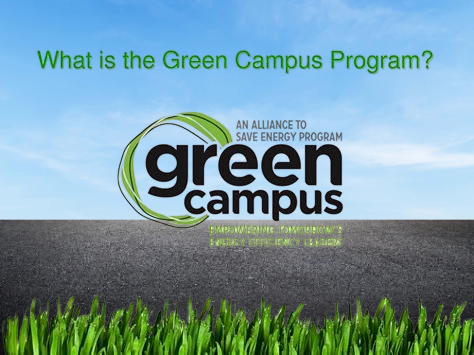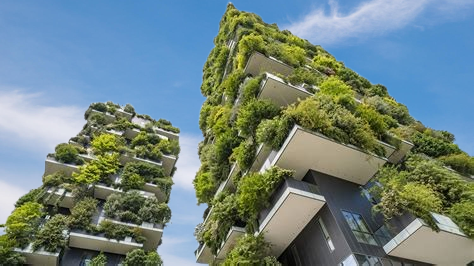: Steps for

Introduction to Building a Green Campus
A green campus is an educational institution that focuses on being sustainable and caring for the environment in its daily activities and overall values. With climate change threatening our ecosystems and lives, it’s vital for schools and universities to adopt eco-friendly practices. Reducing carbon footprints and supporting environmental health has become a key responsibility for these institutions, making the creation of a green campus essential rather than optional.
Educational institutions have a vital role in fostering environmental awareness and sustainability. By implementing green initiatives, they can serve as models for the broader community, illustrating the importance of resource conservation and ecological responsibility. Actions such as reducing waste, conserving energy, and utilizing sustainable materials do not just contribute to institutional goals; they also engage students and faculty alike in a broader conversation around climate action.
The benefits of creating a green campus extend well beyond environmental impact. Studies indicate that sustainable campuses promote healthier learning environments, ultimately resulting in improved academic performance and well-being of students. A focus on green spaces and renewable resources fosters an atmosphere that encourages collaboration, innovation, and a sense of community. Furthermore, such campuses can attract prospective students and faculty who prioritize sustainability, thus enhancing the institution’s reputation and appeal.
Incorporating sustainability in the educational model can inspire future generations to recognize their role in combating environmental issues. The alignment of academic curricula with green principles reinforces the importance of sustainability, encouraging students to adopt eco-friendly behaviors beyond their college experience. Consequently, building a green campus not only prepares students for the challenges of tomorrow but also contributes to the significant goal of climate change mitigation today.
Understanding the Principles of Sustainability

Building a green campus necessitates a fundamental understanding of sustainability principles, which serve as a guiding framework for educational institutions aiming to promote environmentally responsible practices. The concept of sustainability encompasses three interrelated pillars: environmental protection, social equity, and economic viability. Together, these elements form a holistic approach to sustainable development that is essential for fostering resilient and vibrant educational communities.
The first pillar, environmental protection, focuses on the responsible stewardship of natural resources and ecosystems. Educational institutions can implement practices such as reducing energy consumption, utilizing renewable energy sources, and promoting biodiversity through sustainable landscaping. By prioritizing these actions, campuses can not only reduce their carbon footprint but also enhance the health and well-being of their surrounding environment. This commitment to environmental sustainability is critical as educational facilities serve as exemplars for students and the community at large.
Social equity, the second pillar, emphasizes the importance of creating inclusive and accessible spaces that meet the diverse needs of all individuals. A sustainable campus should actively engage with its community, ensuring that educational opportunities and resources are readily available to underrepresented or marginalized groups. Moreover, it is crucial to foster a sense of belonging and respect among students, faculty, and staff, promoting collaboration and social cohesion within the campus environment.
The final pillar, economic viability, underscores the necessity of financial sustainability in implementing green initiatives. Educational institutions must balance financial considerations with their commitment to sustainability. Investing in energy-efficient technologies and sustainable infrastructures can lead to long-term cost savings, thereby creating a feasible model for sustainable development. In essence, understanding these three pillars of sustainability empowers educational institutions to adopt comprehensive strategies that benefit both their immediate community and the broader environment.
Assessing Current Practices on Campus

Evaluating the current sustainability practices on campus is a fundamental step toward building a greener and more sustainable learning environment. This initial assessment helps institutions identify areas of improvement, ensuring that future initiatives are both relevant and effective. One effective method to conduct this evaluation is by performing sustainability audits, which systematically examine current resource usage, waste management, energy consumption, and transportation practices.
Sustainability audits provide valuable insights into how resources are allocated and reveal potential inefficiencies. Through on-site assessments and data collection, campuses can create a clear picture of their environmental impact. It is essential to establish metrics that can measure key performance indicators, such as energy consumption per square foot or waste diversion rates. These metrics serve as a baseline against which future improvements can be gauged, enabling campuses to track their progress over time.
In addition to quantitative assessments, gathering qualitative feedback from both students and staff is crucial. Surveys and focus groups can yield insights into the perceived effectiveness of existing sustainability practices and highlight underrepresented issues that may not be captured through audits alone. Engaging the campus community in this process fosters a sense of ownership and commitment to sustainability goals.
Moreover, analyzing existing resource management practices is vital in this comprehensive evaluation. This includes reviewing policies related to water usage, waste disposal, and energy procurement. Through a thorough understanding of current systems and resources, institutions can strategically plan initiatives that promote sustainability, ensuring that improvements align with the unique needs of the campus community.
By taking these steps to assess current practices, campuses position themselves for meaningful advancements in sustainability. The insights garnered through this evaluation process can inform targeted strategies that lead to a more sustainable campus environment. This foundational work ultimately sets the stage for successful implementation of future sustainability initiatives.
Incorporating Green Infrastructure and Design

Creating a green campus involves thoughtful planning and the implementation of sustainable design strategies that prioritize both the environment and the learning experience. One key aspect is the use of sustainable materials during construction and renovation. Materials such as reclaimed wood, recycled metal, and eco-friendly concrete contribute significantly to reducing the ecological footprint of buildings. By selecting materials that minimize energy consumption for extraction, transportation, and manufacturing, campuses can achieve a more sustainable infrastructure.
In addition to material selection, incorporating green roofs and walls is an effective strategy for enhancing the environmental performance of campus structures. Green roofs can provide insulation, reduce stormwater runoff, and enhance biodiversity by providing habitats for various species. Similarly, living walls can improve air quality and add aesthetic value to buildings, fostering a more inviting learning environment. These elements not only help in achieving energy efficiency but also serve as teaching tools, showcasing sustainable practices in action.
Another important consideration is optimizing landscaping to support biodiversity. Implementing native plant gardens, rain gardens, and permeable pavements can create green spaces that promote local flora and fauna, reduce water runoff, and contribute to the overall ecological health of the campus. By incorporating native plants, campuses can minimize maintenance costs associated with irrigation and fertilizer use while enhancing their aesthetic appeal.
Moreover, architectural choices play a significant role in energy efficiency. Designing buildings to maximize natural light, enhance airflow, and minimize energy use can significantly reduce reliance on heating and cooling systems. Overall, a focus on green infrastructure and design not only addresses environmental concerns but also enriches the educational experience, making sustainability a tangible aspect of campus life. The thoughtful integration of these strategies can transform a traditional learning environment into a vibrant, eco-conscious community.
Developing a Sustainability Curriculum

Integrating sustainability into educational institutions is a vital step in fostering environmental consciousness among students. A sustainability curriculum not only prepares students to face imminent environmental challenges but also empowers them to become change agents in their communities. To effectively develop such a curriculum, institutions can begin by incorporating sustainability topics across various subjects, facilitating a comprehensive understanding of environmental issues.
Various subjects can highlight aspects of sustainability; for instance, science classes can explore ecological systems and their interrelatedness, while social studies can address the economic, cultural, and political dimensions affecting environmental policies. Mathematics can be used to analyze data on natural resources and their depletion, thus highlighting the importance of resource management. Additionally, programs that encourage hands-on projects, such as creating community gardens or conducting energy audits on campus facilities, foster practical skills and deepen students’ engagement in sustainability efforts.
Interdisciplinary studies can play an essential role in developing a holistic understanding of sustainability. By combining perspectives from fields such as environmental science, economics, and ethics, students can grasp the multifaceted nature of sustainability challenges. Institutions like the University of California, Los Angeles, and Colorado State University offer specialized programs in environmental design and sustainability studies that serve as excellent models. These programs often invite students to participate in real-world projects that address local environmental issues, thereby enhancing their learning experience.
Ultimately, the development of a sustainability curriculum should also include opportunities for community engagement and collaboration with local organizations. By fostering partnerships with environmental advocacy groups, institutions can provide students with avenues to apply their knowledge in practical settings. This proactive approach not only enriches the learning experience but also reinforces the importance of sustainability as a shared responsibility among future generations. Through thoughtful integration of sustainability into the curriculum, educational institutions can cultivate a generation of informed citizens committed to environmental stewardship.
Engaging the Campus Community

Engagement of the campus community is a pivotal component in fostering sustainability initiatives within educational institutions. Involving students, faculty, and staff in sustainable practices not only cultivates a sense of ownership but also enhances the collective commitment towards creating a greener campus. Collaboration among various campus stakeholders is essential in laying the foundation for effective sustainability programs. By working together, members of the campus community can brainstorm innovative solutions to environmental challenges and share diverse perspectives.
One effective approach to promote engagement is by organizing workshops that focus on sustainable practices. These workshops can cover a range of topics, from waste reduction strategies to energy conservation techniques, enabling participants to actively learn and apply new skills. In addition to workshops, hosting campaigns and events leads to increased awareness about sustainability issues. Engaging students through competitions, such as eco-friendly design contests or carbon footprint challenges, can also galvanize enthusiasm and encourage creative ideas aimed at improving campus sustainability.
Encouraging student-led projects is another important aspect of community engagement. Empowering students to take initiative not only fosters leadership but also instills a sense of responsibility regarding environmental stewardship. For instance, forming sustainability clubs or committees can provide a structured avenue for students to advocate for green practices and specific initiatives on campus. Collaborating with faculty members can further enhance these projects, as professors may offer expertise, resources, and mentorship opportunities to aspiring student leaders.
Building a culture of sustainability requires a multifaceted approach that actively engages all members of the campus community. By promoting collaboration, hosting informative events, and empowering student-led initiatives, educational institutions can successfully foster an environment where sustainability is valued and prioritized. These shared efforts will ultimately lead to a more vibrant, sustainable, and engaged campus community.
Implementing Energy and Resource Conservation Practices
In the pursuit of establishing a green campus, implementing energy and resource conservation practices is essential. These practices not only contribute to environmental sustainability but also enhance the operational efficiency of educational institutions. To begin with, waste reduction strategies should be at the forefront. By minimizing waste generation, campuses can significantly lessen their overall environmental footprint. This can be achieved through initiatives such as digital coursework, which reduces paper usage, and encouraging the use of reusable containers among students and staff.
Recycling programs represent another critical aspect of resource conservation. Effective recycling initiatives should cover a wide range of materials, including paper, plastics, metals, and electronic waste. Providing clearly labeled recycling bins throughout the campus is vital for encouraging participation, and educational campaigns can further raise awareness about the importance of recycling. Such efforts not only divert waste from landfills but also promote a culture of sustainability within the campus community.
Water conservation measures are also vital in conserving resources. Campuses can implement low-flow fixtures in restrooms and showers, as well as use rainwater harvesting systems for irrigation purposes. Landscaping with drought-resistant plants can further reduce water consumption, aligning with the principles of sustainable design.
Moreover, embracing energy-efficient technologies is key to reducing energy consumption on campus. Upgrading to LED lighting, utilizing energy-efficient appliances, and investing in smart building technologies can dramatically lower energy usage. Additionally, incorporating renewable energy sources such as solar panels can provide long-term cost savings while minimizing reliance on fossil fuels.
By adopting these energy and resource conservation practices, campuses can make significant strides toward sustainability. These efforts can lead to reduced operational costs and foster an environmentally-conscious learning atmosphere, ultimately benefiting both students and the wider community.
Measuring Progress and Impact
To effectively assess the success of sustainability initiatives on campus, it is essential to establish a robust framework for measuring progress and impact. This involves defining key performance indicators (KPIs) that reflect the objectives of the sustainability goals set forth by the institution. KPIs may include metrics such as energy consumption, water usage, waste diversion rates, and greenhouse gas emissions. These indicators provide quantifiable data that can be analyzed to evaluate the effectiveness of the implemented strategies.
Various tools and methodologies are available for monitoring energy use and evaluating sustainability metrics. For instance, energy management software can track electricity consumption in real time, enabling campus planners to identify trends and areas for improvement. Similarly, waste management audits can help assess the volume and types of waste generated on campus, guiding initiatives aimed at reducing landfill contributions and enhancing recycling efforts.
Incorporating these measurement tools into the campus’s sustainability framework not only aids in making informed decisions but also fosters a culture of accountability. Regularly reporting results to the campus community is crucial for maintaining transparency and motivating collective engagement in sustainability endeavors. Clear communication about progress, challenges, and successes raises awareness and can inspire students, faculty, and staff to contribute actively to ongoing initiatives.
Moreover, analyzing the collected data allows for recalibrating strategies, ensuring that the sustainability goals remain aligned with both environmental standards and community expectations. As campuses strive to create sustainable learning environments, integrating systematic progress measurement into their operations will ultimately lead to more effective and meaningful outcomes. Emphasizing the importance of monitoring and impact assessment will be vital to fostering a long-term commitment to sustainability in higher education.
Future Trends in Sustainable Campus Development

As educational institutions increasingly recognize their role in fostering sustainability, future trends in campus development point toward innovative practices that emphasize environmental responsibility. One of the most significant advancements is the integration of renewable energy technologies. Solar panels, wind turbines, and geothermal energy systems are becoming more prevalent on campuses, enabling schools to harness natural resources and significantly reduce their carbon footprint. These systems not only contribute to energy independence but also serve as practical teaching tools for students engaging with renewable energy concepts.
Another emerging trend is the implementation of smart building systems. These technologies optimize energy use by employing sensor-driven automation to control heating, ventilation, air conditioning, and lighting. For instance, smart thermostats adjust temperatures based on occupancy patterns, minimizing energy waste and enhancing occupant comfort. Moreover, data analytics can track energy consumption in real-time, providing campus administrators with insights to make informed decisions about energy management and resource allocation.
Sustainable transportation options also play a critical role in green campus development. Institutions are investing in electric vehicle charging stations, bicycle-sharing programs, and shuttle services powered by alternative fuels. These initiatives promote environmentally friendly commuting practices among students and staff, reducing reliance on fossil fuels and contributing to cleaner air quality around campuses.
Looking ahead, the vision for sustainable campuses encompasses a holistic approach that integrates advanced technologies, environmental stewardship, and community engagement. By embracing these trends, universities and colleges can create vibrant learning environments that not only educate future leaders but also contribute to the larger goal of shaping sustainable societies. The convergence of these strategies will define the next generation of green campuses, illustrating the profound impact educational institutions can have on fostering a sustainable future.



[…] psychological impact of nature on individuals, particularly students, is well-documented and significant. Green campuses […]